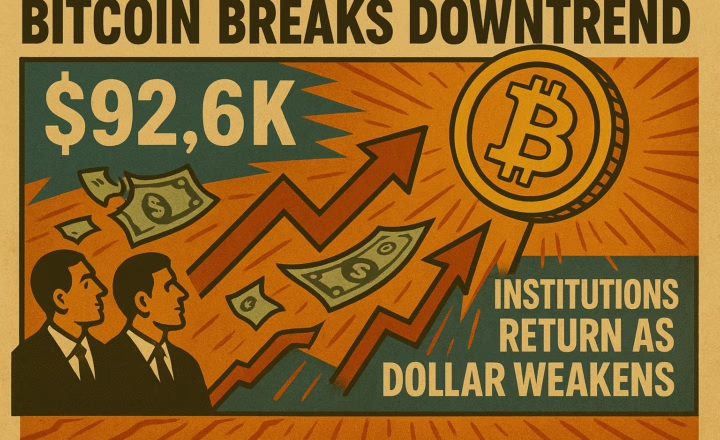Trump Holds First White House Crypto Summit, Announces Bitcoin Strategic Reserve Plan
Overview
On March 7, 2025, U.S. President Donald Trump hosted the first-ever “Crypto Summit“ at the White House, officially unveiling his administration’s Bitcoin Strategic Reserve plan. Based on an executive order signed in January, this initiative aims to establish a government-held cryptocurrency reserve, primarily leveraging already confiscated digital assets such as Bitcoin. Trump emphasized that while the initial stockpile will consist of seized assets, the administration will explore options for expanding these reserves over time. The summit gathered key industry figures, including executives from leading crypto exchanges, blockchain firms, and policymakers, to discuss regulatory frameworks and the potential impact of the strategic reserve. Industry leaders welcomed the shift, calling it “a historic moment where the U.S. government is formally recognizing digital assets as part of its economic strategy.” However, some critics question how the government plans to utilize these reserves and whether taxpayers will see any direct benefits.
Regulatory Shift in the U.S.
This summit and the associated executive order mark a significant shift in U.S. crypto regulation. Under former President Joe Biden, the SEC took an aggressive stance against the crypto industry, launching lawsuits against major exchanges like Coinbase and Binance. However, Trump’s administration has reversed course, moving toward pro-crypto policies aimed at fostering innovation and investment. A January 23 executive order established a task force to review and revamp the U.S. approach to crypto regulation, instructing financial regulators to end discriminatory banking practices against crypto firms. Additionally, the order prohibited the Federal Reserve from issuing a U.S. central bank digital currency (CBDC), signaling Trump’s opposition to government-controlled digital money.
Regulatory agencies have also adjusted their stance. On March 7, the Office of the Comptroller of the Currency (OCC) announced that national banks can engage in cryptocurrency-related activities, including custody and stablecoin transactions, without requiring pre-approval. This move effectively overturned a previous rule that had imposed additional regulatory burdens on banks working with crypto firms. The SEC also withdrew its controversial crypto custody accounting guidelines, which had made it costly for institutions to provide crypto custody services.
These changes represent a policy shift from restriction to facilitation, aligning with Trump’s broader economic strategy of positioning the U.S. as a global leader in blockchain and digital asset technology.
Market Impact
Trump’s pro-crypto stance and the announcement of the strategic reserve plan have significantly influenced Bitcoin’s price. Following his election victory, Bitcoin surged to an all-time high of $109,000, driven by speculation over regulatory easing. However, a wave of profit-taking and market corrections saw prices drop before stabilizing. On March 2, news of Trump’s reserve plan triggered an 11% Bitcoin rally, pushing prices above $94,000, while Ethereum gained 13%. The total crypto market capitalization expanded by $300 billion within hours, underscoring the market’s sensitivity to U.S. government policy shifts.
However, when details of the reserve plan emerged on March 7, revealing that the government would not purchase new Bitcoin but instead leverage existing confiscated assets, market enthusiasm waned. Bitcoin briefly dropped over 5% to $85,000 before recovering to $89,000 following reassurances that additional acquisitions remained a possibility.
Institutional Response
Analysts are divided on the long-term impact of the strategic reserve. S&P Global Ratings’ Andrew O’Neill stated, “While symbolic, this is the first time the U.S. government has formally acknowledged Bitcoin as a strategic asset.” Meanwhile, crypto hedge fund manager Charles Edwards criticized the plan, calling it “nothing more than a rebranding of government-seized Bitcoin, without any new market demand.” Despite mixed short-term reactions, many see this as a milestone that could enhance the credibility of digital assets among institutional investors.
According to Jeff Kendrick of Standard Chartered Bank, “If Trump stays in office, Bitcoin could reach $500,000 by the end of his term.” Recent filings indicate that major U.S. financial institutions, including hedge funds and sovereign wealth funds, are increasing Bitcoin allocations, suggesting a growing institutional embrace of digital assets.
Future Outlook
The feasibility of the Bitcoin Strategic Reserve remains uncertain. While the plan is currently limited to seized assets, future acquisitions may require congressional approval or legal maneuvers to allocate federal funds for direct Bitcoin purchases. Some legal experts argue that the Treasury’s Exchange Stabilization Fund (ESF)—used historically for foreign exchange interventions—could be repurposed to hold Bitcoin, bypassing the need for congressional authorization.
One significant implication of the reserve plan is reduced selling pressure from government-held Bitcoin. Historically, confiscated Bitcoin has been auctioned off, creating periodic supply shocks. If the government commits to holding Bitcoin long-term, it could effectively remove millions of BTC from circulation, potentially leading to scarcity-driven price appreciation.
Additionally, the U.S. initiative may prompt other nations to consider Bitcoin as a reserve asset. While countries like El Salvador have already adopted Bitcoin as legal tender, the U.S. formally recognizing digital assets in its national reserves could set a precedent for other economies to follow.
Key Risks
Despite the positive outlook, challenges remain. Political shifts could reverse pro-crypto policies, particularly if opposition parties push back against government Bitcoin holdings. Additionally, if overregulation or market volatility arises, institutional confidence in Bitcoin could weaken. The broader macroeconomic environment, including Federal Reserve policies and global economic conditions, will also play a role in shaping Bitcoin’s trajectory.
Conclusion
Trump’s Bitcoin Strategic Reserve Plan and regulatory shifts signal a major turning point in how the U.S. government interacts with digital assets. While short-term volatility is expected, the long-term trajectory appears bullish, with increased institutional participation and mainstream adoption on the horizon. Investors should monitor regulatory updates, institutional investment trends, and macroeconomic factors as the U.S. government’s role in the crypto market continues to evolve.












